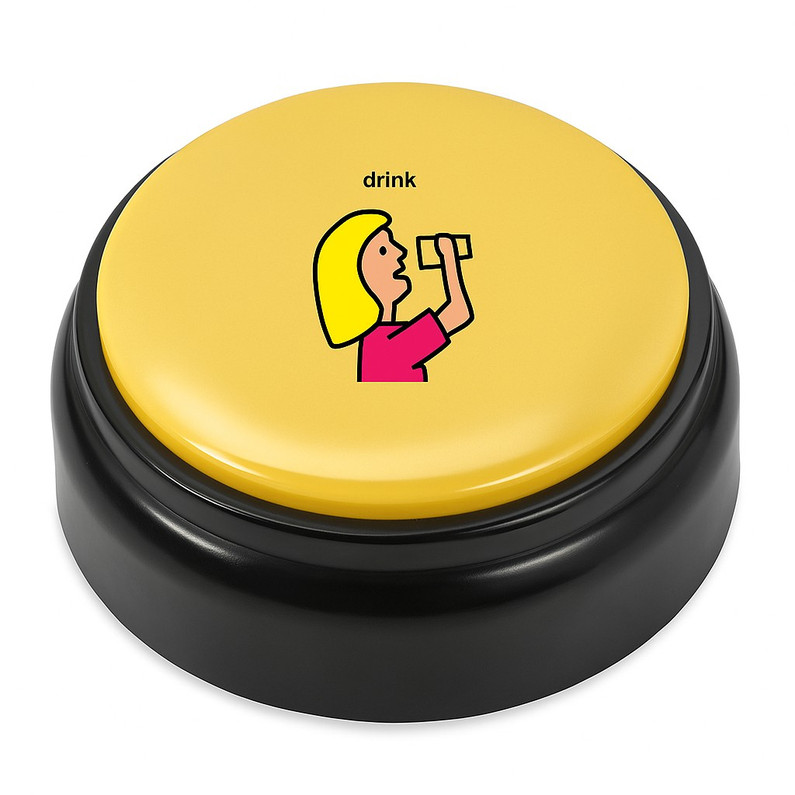Talk About! Communicator: How to Choose Between the Model With or Without a Switch Jack
Choosing the Right Talk About! Communicator: With or Without a Switch Jack?
When selecting an AAC device, one of the most important decisions—often overlooked—is how the user will access it. For some children, especially those with limited motor control or strength, the difference between a communicator with or without a switch jack can mean the difference between true independence and prompt dependence.
Let’s look at how to decide which version of the Talk About! Communicator ↗ best meets your user’s needs.
Understanding Access: Beyond “Pressing a Button”
Many people think of AAC devices as simple “button-pushing tools.” But AAC is really about access, not just activation.
If a child cannot consistently apply enough pressure to activate a button, even the most robust communicator can quickly become frustrating. Often, well-meaning adults step in and guide the child’s hand—known as hand-over-hand (HOH) assistance. While this might feel helpful, it can unintentionally create prompt dependence, where the child relies on someone else to “help them talk.”
The Hand-Over-Hand Dilemma
Before choosing a communicator that requires direct selection (like the standard Talk About! without a switch jack), consider:
- Does the child have the strength and range of motion to activate a button independently?
- Is it reasonable to expect they’ll develop that ability soon?
If the answer is no, then continuing HOH for communication may not be beneficial. Instead, those motor skills can be practiced during therapy or play—not during communication opportunities.
AAC should always allow for immediate, independent communication, not dependent participation.
Why the Switch Jack Version Matters
A Talk About! Communicator with a switch jack gives users more flexibility and independence. The switch jack allows an external adaptive switch to control the communicator—ideal for users who cannot press the built-in buttons.
For example:
- A child with minimal pressure ability might use a Hover Switch ↗, which requires zero pressure to activate.
- A student with reliable head or knee movement could use a Wobble Switch ↗ or Super Sensitive Micro Switch ↗, mounted wherever they have consistent control.
By mounting the switch where the child can access it independently—hand, elbow, knee, foot, or even eyebrow—you give them control over when and how they communicate. That’s what true independence looks like.
When the Standard Model May Be Enough
If a child has adequate strength and motor control to easily activate the device’s built-in buttons, the Talk About! without a switch jack may be ideal. It’s compact, simple, and requires no extra cords or components.
However, it’s wise to re-evaluate regularly. Motor control and endurance can change over time, so choosing a flexible device (or keeping switch access in mind) can prevent communication interruptions later on.
Real-World Example
One of our customers, a preschooler with cerebral palsy, struggled to activate a standard button communicator. Each time an adult provided hand-over-hand assistance, the child appeared to “speak”—but the communication wasn’t autonomous.
When the team switched to a Talk About! with switch jack, paired with a Hover Switch ↗ mounted near the child’s forehead, everything changed. The child could now activate the device independently, smiling as they heard their voice come through the speaker.
That’s the power of proper access.
The Bottom Line
When choosing between the Talk About! Communicator with or without a switch jack, ask yourself:
“Can the child activate this device independently?”
If the answer is not yet, opt for the switch jack version. It allows for immediate, independent communication while supporting the child’s current physical abilities.
AAC should meet the communicator where they are today, not where we hope they’ll be later.
Recommended Products
(Also compatible with many other switch options—see our Adaptive Switches Collection ↗ for more ideas.)
Final Thoughts
As AAC professionals, educators, and caregivers, our goal is to empower—not enable. Choosing the correct access method ensures that communication is not dependent on another person’s hand, but owned entirely by the child.
So, when in doubt, choose the option that maximizes independence, consistency, and confidence. Because every communicator deserves to be heard—today.
Recent Posts
-
Switch Adapted Toys: Making Play Accessible for Everyone
Have you ever considered how much joy a simple toy can bring to a child? For many children with di …Dec 06, 2025 -
Talk About! Communicator: How to Choose Between the Model With or Without a Switch Jack
Choosing the Right Talk About! Communicator: With or Without a Switch Jack? When selecting an AAC de …Oct 31, 2025 -
Encouraging Unilateral Weight-Bearing Exercises with a Switch-Adapted Toy: Ideas for Physical Therapy and Home Treatment Carryover
When working with young children who have limited understanding of cause and effect, finding ways to …Feb 10, 2025







